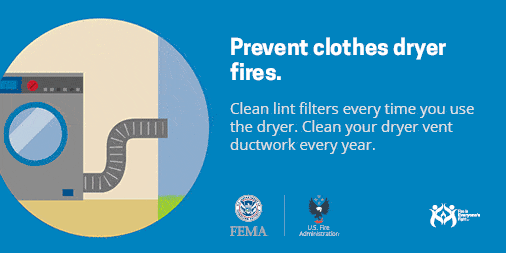| By Secretary Bill Wohl | |
| November 25, 2018 | |
| Fire sirens filled the afternoon air around West Grove on Sunday as local fire companies rushed to reports of "smoke in the dwelling" in Penn Township. As it turned out, this residence experienced a problem that results in nearly 16,000 home fires involving clothes dryers or washing machines each year. These fires resulted in annual losses estimated at 13 deaths, 440 injuries, and $238 million in property damage. The WGFC was dispatched for smoke in the dwelling -- a dispatch that brings an automatic response of support from area fire companies including Oxford, Cochranville and Avondale, due to the possibility of fire in a house. Deputy 22 went on location and reported smoke in the dwelling, a mobile home along Baltimore Pike in Penn Township, east of Sunnyside Road. Engine 22-1 arrived first and stretched an attack line, as Ladder 22 took the driveway to assist with helping to find the source of the smoke. Rescue 22 arrived, along with Tanker 22, and additional units including Engine 22-3, Brush 22, and Ambulance 22. Neighboring companies also responded with an Engine, Ladder, and Tanker from Oxford, two Engines from Avondale, and Rescue 27 from Cochranville. It turned out the source of the smoke was an improperly operating vent on a clothes dryer. Crews used ventilation fans to clear smoke, and took up hose lines and supply hose. Special thanks to the fire police, who managed traffic along busy Baltimore Pike that had to navigate in one lane, to make room for all the parked fire apparatus. Today's call provides an important lesson for area residents on home appliance safety. Among the many fires in this country , consider these facts: Clothes dryers accounted for 92% of the fires; washing machines 4%, and washer and dryer combinations accounted for 5%. The leading factor contributing to the ignition of home fires involving clothes dryers was failure to clean, accounting for one-third (33%) of dryer fires. A mechanical or electrical failure or malfunction was involved in the vast majority of home fires involving washing machines. Fires involving clothes dryers usually started with the ignition of something that was being dried or was a byproduct (such as lint) of drying, while washing machine fires usually involved the ignition of some part of the appliance. Residents are reminded to clean out dryer lint traps each time they use the dryer. Also make it a habit to regularly inspect and clean out dryer hoses, at least once per year (consider doing so twice each year when checking smoke detectors during time changes each spring and fall). Failure to do so can result in a fire, with risks to life and property. For more information and home safety tips about washer and dryer safety, see this site maintained by the National Fire Protection Association: https://www.nfpa.org/Public-Education/By-topic/Safety-in-the-home/Dryers-and-washing-machines |
|
| Units: | WGFC Engines 22-1 and 22-3, Rescue 22, Ladder 22, Tanker 22, Ambulance 22-1 and 22-2, Fire Police |
| Mutual Aid: | Ladder 21, Tanker 21, Engine 21-4, Engine 23-2, Rescue 23, Rescue 27, Avondale Fire Police, PA State Police |




